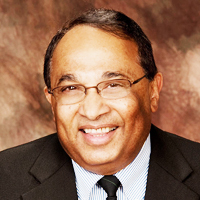Behavioral factors of Abdominal Obesity and effects of lifestyle changes with Fiber Adequacy
Published on: 25th July, 2017
OCLC Number/Unique Identifier: 7317598452
The etiology of abdominal obesity is multifactorial and has environmental factors as its most expressive risk factors. This study cross-sectional analyzed the association of abdominal fatness with physical inactivity and food inadequacy of 1,557 subjects, both genders, over 35yrs. old, enrolled in an ongoing epidemiological study. Waist circumference (WC) was the primary variable and demographic, social-economic, anthropometric and dietary intake data, were the co-variables. NCEP-ATP III, WHO, IPAQ-long (version 8) and Healthy Eating Index were used for functional definition of variables. Furthermore, longitudinal data from 50 subjects in an exercise protocol for 10 week receiving either regular diet (G1, n=22) or 30g fiber adequacy (G2; =28), were analyzed. The performed statistical analyses used software SAS for Windows, version 9.1 with p=0.05. In a predominantly female sample (74%), 76% aging 35-60yrs, 64% completed elementary school, 73% were living in a low income household, 77.5% overweight. The 62.5% presenting altered WC values were predominantly older, presented higher body fatness, and were consuming low variety-poor quality diet rich in fat (mainly saturated) and lower in fruit. WC correlated negatively with fruit intake and aerobic capacity (VO2max) but only carbohydrate (positive) and fruit intake (negative) were considered independent risk factors for abdominal obesity. In the longitudinal study, both G1 and G2 groups were similar at baseline and G1 maintained the anthropometry values throughout the experiment. Conversely, G2 decreased total body (4%) and WC (7%) fatness, reducing severe obesity by 16%, minimally affecting overweight and eutrophic rates. G2 presented 211% increase in fiber intake and 150% increase in plasma beta-carotene (colorful-fiber marker). Thus, in conclusion, recommended dietary fiber intake (increased fruit and low CHO intake) and physical activity would be the recommended changes against abdominal obesity and, by associating both physical exercises and dietary fiber there was indeed a decrease in abdominal fatness and obesity, predominantly at its higher grade.
Automatic Hand Features Extraction for Forensic Purposes
Published on: 13th December, 2023
This work describes a low computational cost image processing methodology for the identification of hand features for forensic applications – like height, gender, and ethnicity for suspect inference. The proposed methodology provides an adequately tailored sequence of image and geometrical processings on pictures of hands based on critical points like fingertips, finger valleys, and palm centers. As a result, we present the automatic measurements taken on 416 images compared with actual measurements from a manual caliper. The proposed approach leads to a 93.16% correlation (p - value < 0.05) related to the caliper, demonstrating the effectiveness of the technique.
Male Linear Anthropometrics of Selected Nigerian Ethnicities: A Cross - Sectional Analysis
Published on: 23rd October, 2024
Introduction: This study aims at evaluating selected linear anthropometrics of three Nigerian ethnic groups to provide baseline data for the creation of 3D Negroid anatomic models.Methods: The research design was a cross-sectional design. The sampling technique was multistage proportionate random sampling. The places of study were Imo, Oyo, and Kano States of Nigeria. The study lasted for one (1) year. Random selection of 1500 adult males from three major tribes (500 Igbo, 500 Yoruba, and 500 Hausa between the ages of 18 and 40 years). Tukey’s Post Hoc test of multiple comparisons was carried out to determine the specific ethnic groups that differ in specific anthropometric parameters.Results: The differences in standing height, arm length, and thigh length across the Hausa, Igbo, and Yoruba ethnic groups are statistically significant (p < 0.05). Conclusion: The study concluded that the Igbo and Yoruba groups had higher standing heights compared to the Hausa group. Arm length was longer in the Igbo and Yoruba groups compared to the Hausa group. However, thigh length was greater in the Hausa group compared to both the Igbo and Yoruba groups, while the Hausa group had longer thigh lengths than both the Igbo and Yoruba groups. The Igbo group displayed the largest arm span, whereas the Hausa group had the widest shoulder breadth. However, the Hausa group had a lower bi-iliac breadth in comparison to the other two ethnic groups.




